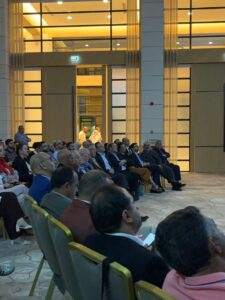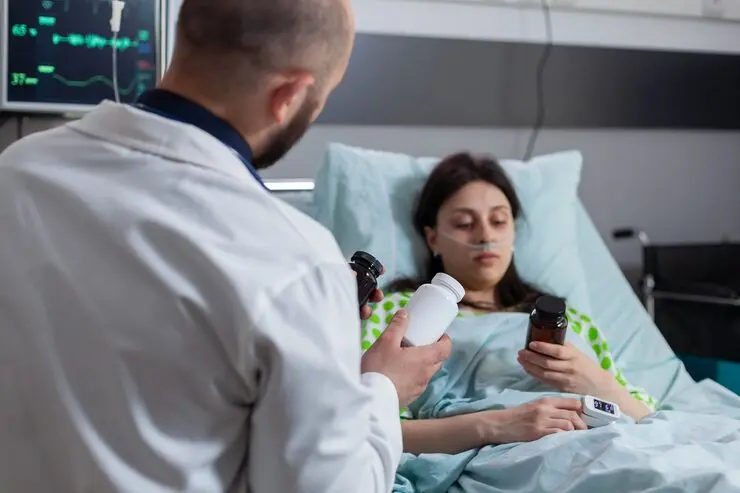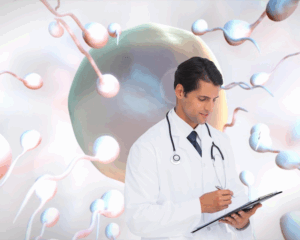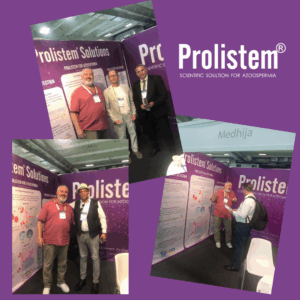
Male Infertility Symposium – Landmark Hotel, Amman
The Jordanian Society for Fertility and Genetics recently

Nonobstructive azoospermia (NOA) is a condition characterized by the failure of spermatogenesis, leading to the absence of sperm in semen. Affecting approximately 1% of the male population globally, NOA is responsible for about 10% of male infertility cases. Unlike obstructive azoospermia (OA), which results from physical blockages in the reproductive tract, NOA arises from intrinsic issues related to hormone production, testicular function, or genetic factors. This review delves into the endocrine basis of NOA, emphasizing how hormonal imbalances contribute to the condition and examining current and potential therapeutic approaches.
NOA can stem from congenital or acquired factors. Congenital causes include genetic conditions such as Klinefelter syndrome (KS), Y-chromosome microdeletions, and mutations in genes associated with spermatogenesis. Acquired factors include radiation exposure, toxins, hormonal imbalances, lifestyle issues, and diseases like varicocele or orchitis. Approximately 70% of NOA cases are idiopathic, where the underlying cause remains unidentified.
The condition’s etiology can also be categorized based on hormonal profiles: hypogonadotropic hypogonadism (HH) and hypogonadotropic hypogonadism (primary testicular failure). HH, which accounts for about 45% of NOA cases, involves insufficient stimulation of the testes due to impaired secretion of gonadotropin-releasing hormone (GnRH) or its downstream hormones, follicle-stimulating hormone (FSH) and luteinizing hormone (LH). In contrast, hypogonadotropic hypogonadism often results from direct testicular damage or dysfunction.
The hypothalamic-pituitary-testis axis plays a central role in regulating spermatogenesis. The hypothalamus secretes GnRH, which stimulates the anterior pituitary gland to release FSH and LH. FSH acts on Sertoli cells in the testes to support sperm production, while LH stimulates Leydig cells to produce testosterone. Disruptions at any level of this axis can impair spermatogenesis, leading to NOA.
Hormonal analysis is crucial for diagnosing NOA and distinguishing it from OA. Key hormonal markers include:
Hormonal therapies have shown promise in managing certain forms of NOA, particularly those associated with HH. Treatments are tailored to individual hormonal profiles and the etiology of the condition. Nonobstructive Azoospermia
GnRH is central to regulating spermatogenesis. Pulsatile GnRH administration has been successful in restoring spermatogenesis in HH patients. Studies have shown that intravenous or subcutaneous GnRH delivery can resume sperm production and even lead to natural conception in some cases. However, this approach is not effective for primary testicular failure.
Gonadotropin therapy involves administering FSH and human chorionic gonadotropin (hCG) to mimic natural hormonal stimulation of the testes. This treatment is particularly effective in HH patients with intact testicular tissue. Studies report high rates of sperm detection in ejaculate samples following gonadotropin therapy, especially when combined with testosterone optimization.
These agents are used to increase intratesticular testosterone levels by preventing the conversion of testosterone to estrogen. They can enhance the effectiveness of gonadotropin therapies and are particularly beneficial for men with elevated estrogen levels.
While testosterone therapy is not suitable for men desiring fertility, it can help manage symptoms in NOA patients with androgen deficiency. Careful monitoring is necessary to avoid suppressing spermatogenesis further.
Techniques such as testicular sperm extraction (TESE) and microdissection TESE are used to retrieve sperm directly from the testes for assisted reproductive technologies (ART). Hormonal optimization before surgery can improve sperm retrieval rates.
Advances in understanding the genetic and molecular basis of NOA have opened new avenues for treatment. For example, single-cell RNA sequencing has identified novel genes and pathways involved in spermatogenesis, paving the way for targeted therapies. Immunological approaches, such as immunization against gonadotropins, are being explored for reversible male contraception but may also have implications for treating specific forms of NOA.
Lifestyle factors, including obesity, smoking, and exposure to environmental toxins, have been implicated in NOA. Obesity is associated with reduced testosterone levels and increased estrogen levels, both of which can impair spermatogenesis. Smoking and toxin exposure can cause oxidative stress, damaging testicular tissue. Addressing these factors through lifestyle modifications and antioxidant supplementation can improve outcomes for NOA patients.
Despite significant progress in understanding and managing NOA, several challenges remain. Hormonal therapies are not universally effective, particularly in cases of severe testicular damage or genetic abnormalities. Moreover, the variability in hormonal profiles and responses to Nonobstructive Azoospermia. treatment necessitates individualized approaches.
Future research should focus on:
Nonobstructive azoospermia is a complex condition with diverse etiologies and hormonal profiles. A better understanding of its endocrine basis has enabled the development of targeted therapies, offering hope to many affected men. However, continued research and innovation are essential to address the unmet needs of NOA patients and improve their chances of achieving parenthood.

The Jordanian Society for Fertility and Genetics recently

Prolistem for non obstructive azoospermia, Non-obstructive azoospermia (NOA)

Introduction Male infertility, especially caused by azoospermia, affects

We are proud to have participated in the